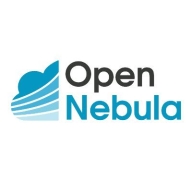

Sangfor HCI and OpenNebula compete in the Hyper Converged Infrastructure market. Sangfor HCI seems to have the upper hand due to its integrated features, reducing ancillary license needs, and competitive pricing.
Features: Sangfor HCI offers features like competitive pricing with integrated CDP and firewalls, reducing ancillary licenses. It provides significant ROI through reduced costs in power, cooling, and space. The solution also supports public cloud use with efficient resource utilization. OpenNebula offers ease of use and simple deployment, with good support for hypervisors and a robust API. Its Marketplace simplifies VM deployment, and it supports multiple views and data centers in one UI.
Room for Improvement: Sangfor HCI can improve by addressing price increases and simplifying its interface further. There's potential in increasing scalability options and enhancing its cloud management capabilities. OpenNebula could enhance its enterprise edition to compete with solutions like VMware. The transition from free to paid licenses could be smoother, and community support could be more robust for better adoption.
Ease of Deployment and Customer Service: Sangfor HCI provides easy management with a single management console and reliable support, though initial setup can be complex. OpenNebula excels in straightforward deployment and boasts an active community for support. Its documentation is comprehensive, enhancing user experience.
Pricing and ROI: Sangfor HCI offers competitive pricing despite recent hikes, maintaining value through integrated features and superior ROI on power, cooling, and space savings. OpenNebula offers a free open-source version and a cost-effective enterprise edition, largely attracting users needing flexibility and customization options while managing lower hardware costs.
| Product | Market Share (%) |
|---|---|
| OpenNebula | 5.8% |
| Sangfor HCI - Hyper Converged Infrastructure | 2.0% |
| Other | 92.2% |


| Company Size | Count |
|---|---|
| Small Business | 7 |
| Midsize Enterprise | 6 |
| Large Enterprise | 3 |
| Company Size | Count |
|---|---|
| Small Business | 23 |
| Midsize Enterprise | 6 |
| Large Enterprise | 3 |
OpenNebula provides the most simple but feature-rich and flexible solution for the comprehensive management of virtualized data centers to enable private, public and hybrid IaaS clouds. OpenNebula interoperability makes cloud an evolution by leveraging existing IT assets, protecting your investments, and avoiding vendor lock-in.
OpenNebula is a turnkey enterprise-ready solution that includes all the features needed to provide an on-premises (private) cloud offering, and to offer public cloud services.
Sangfor HCI is an IT infrastructure platform built on converged architecture. It integrates server virtualization, distributed storage, and networking. Sangfor HCI provides a unified management platform that converges compute, storage, networking, and security on a single software stack. This approach delivers a simplified architecture, ease of use, and reliability for business-critical applications.
Hyperconverged infrastructure is a unified system of data storage. HCI combines storage, computing, networking, and management, unlike traditional storage solutions. HCI systems enable you to build your private cloud, expand to a public cloud, or have your own true hybrid cloud. Sangfor HCI presents two product models: The Sangfor HCI server appliance is a hardware version that enables easy deployment. Sangfor HCI software is the digital version combined with a third-party server that enables flexible deployment.
Sangfor HCI supports Windows systems on desktop and is web-based. Its range of use cases cover a wide spectrum of industries, from healthcare to manufacturing. It is applicable for mid- and large-sized businesses. The software is customizable. Users can customize the logo and contact information in the user interface.
Benefits and Features
Use Cases
Sangfor HCI can be applied tin various scenarios:
Reviews from Real Users
Gabriele P., Senior Software and Systems Engineer at SAMU.IT, says "It is flexible like a hyper-convergence system. You can add nodes, and you can scale to have better performance and stability. I also like the backup feature, the recovery system, and the web interface GUI to handle everything."
A Junior Solutions Engineer at a tech services company adds that "Sangfor has many solutions, and you can easily manage their machine servers with just one management. They're always striving for greatness, and they continuously update their products. For example, they have now built endpoint security within the firewall. They are continuously improving not only the security but also all other products."
We monitor all Cloud Management reviews to prevent fraudulent reviews and keep review quality high. We do not post reviews by company employees or direct competitors. We validate each review for authenticity via cross-reference with LinkedIn, and personal follow-up with the reviewer when necessary.